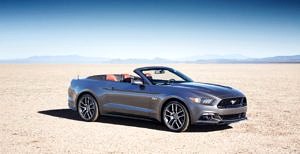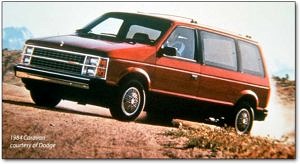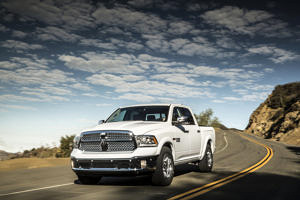 While automobiles were just beginning to mature around this time in the 20th century, their popularity and status is waning (at least in the US) early in this one. As recent studies suggest, the all-day Saturday test drive has been replaced with Internet research and social media polling. Up to 11% of new-car buyers don’t even test drive the car they end up buying.
While automobiles were just beginning to mature around this time in the 20th century, their popularity and status is waning (at least in the US) early in this one. As recent studies suggest, the all-day Saturday test drive has been replaced with Internet research and social media polling. Up to 11% of new-car buyers don’t even test drive the car they end up buying.
It used to be that car buyers wanted a car that stood out, that said something about them. People picked Mustangs or Camaros to show their youth and exuberance. Executives drove Cadillacs and Lincolns. Then, the 1970s happened, with two oil crises, leading to a push for more fuel economy. Honda and Toyota capitalized where the American manufacturers faltered, selling fuel-efficient econoboxes by the truckload. Meanwhile, Ford and GM sold uninspired (and in some cases, unreliable) small cars that just couldn’t compete.
 In the 1980s, the minivan revolutionized people-moving, as the station wagon was on its way out of popularity, a stigma that still hasn’t been removed, sadly. If today’s moms and dads only knew how much more fuel-efficient a station wagon would be than their CUV, SUV or minivan, we’d all be a lot better off. And, just like the minivan killed off the station wagon, the SUV and later the CUV in the 1990s and 2000s, respectively, killed off the minivan. What’s next? The buying process.
In the 1980s, the minivan revolutionized people-moving, as the station wagon was on its way out of popularity, a stigma that still hasn’t been removed, sadly. If today’s moms and dads only knew how much more fuel-efficient a station wagon would be than their CUV, SUV or minivan, we’d all be a lot better off. And, just like the minivan killed off the station wagon, the SUV and later the CUV in the 1990s and 2000s, respectively, killed off the minivan. What’s next? The buying process.
How buyers are looking for a new car has been revamped. Gone are the days of packing a lunch and making the rounds at your local automotive strip-mall, test driving any make or model you’re possibly interested in. Today, sites like cars.com, edmunds.com, autotrader.com, and even eBay motors will give you all the information, as well as hundreds if not thousands of examples of each car, all from the comfort of your own home.
While I don’t bemoan these changes, I find myself in the minority of car shoppers in that I actually enjoy most dealership experiences. Sure, I’ve had my share of shady and smarmy used car salesmen who miss appointments or run out of gas on the test drive, only to try their high-pressure sales tactics on me (they never worked). But you have to get past that, and see the salesperson for who they are: a person just trying to do their job. Top tip: if you don’t like the high-pressure tactics of one sales person, request another one, or their manager, and explain why you don’t want to deal with the first person – you’ll be surprised by the results! If that doesn’t work, walk out and go to another dealer. This is a technique I’ve used myself, and it really works! I enjoy meeting new people, seeing their perspective on cars, as well as their individual sales ethos (and ethics!) and the interaction of the negotiation. A lot of people place car salesmen in the same boat as lawyers and whale feces – they’d like to put it all at the bottom of the ocean. I, on the other hand, only want a select few to end up there. The majority of salespeople, car and otherwise, are simply trying to put food on their table at home.
Meanwhile, CAFE (Corporate Average Fuel Economy) regulations, imposed by the US Government, have sent engineers scrambling to find efficiencies in everything from an automobile’s structure, to its engine, aerodynamics, and alternative power strategies. In the past five years alone, I can list the major improvements in fuel economy: direct injection, active aerodynamics, battery assist, and automatic transmissions. All of these advances can be directly related to improvements in the car’s computer. Whereas a car’s computer used to have very few functions, new cars and trucks have almost everything controlled by their computer. In my own Ford F-150, for example, the side window switches run their inputs through the BCM, or Body Control Module, one of the truck’s main computers, in order to process the user’s input and direct the window motors.
All those new computers added to a car also spin off into better infotainment. A term, coined recently to categorize any in-car entertainment or informational display, it encompasses everything from fully-digital instrument clusters, to voice-activated navigation and music playing, to iPhone/iPod/Android integration. Tech features
The world of hybrid-electric vehicles has gotten a lot better, as the cars themselves resemble what we’re used to seeing on the roads, while their batteries’ efficiency has doubled, and the associated systems (regenerative braking, charging) have all seen great improvements for seamless interaction with the driver.
 New HFE, or High Fuel Efficiency trim packages for vehicles like the Chevrolet Cruze and RAM 1500 truck, bump up fuel economy using racing technology – closing the front grille using shutters when extra airflow isn’t needed to cool the engine, thus decreasing drag and increasing fuel economy.
New HFE, or High Fuel Efficiency trim packages for vehicles like the Chevrolet Cruze and RAM 1500 truck, bump up fuel economy using racing technology – closing the front grille using shutters when extra airflow isn’t needed to cool the engine, thus decreasing drag and increasing fuel economy.
Even trucks are seeing huge gains! First it was the Ford EcoBoost, offering the power of a V8 with the fuel efficiency of a V6, and if you drive it right, it does just that. Next up was the RAM 1500, applying active aerodynamics and a newly-engineered efficient V6 engine to attain 25 MPG on the highway. For the 2015 model year, a small turbo diesel engine is offered in the RAM 1500, rated by the EPA at 18/28 city/highway. That’s the same city mileage, but two better on the highway than my 2010 Nissan Maxima! Whereas trucks were once looked upon as gas hogs, now they are (or at least, can be) as fuel-miserly as some current midsize sedans.
Transmissions themselves have come along way since four-speed automatics were the norm. Today’s passenger cars and trucks now come equipped with mostly 5 and 6-speed gearboxes, while Chrysler has a 9-speed automatic in its new Cherokee, and the RAM 1500 truck can be optioned with an 8-speed one. All of the American full-size trucks come equipped with 6-speed automatics, standard.
While searching for fuel economy, the engineers frantically also try to eke out as much power as the can. Today’s 4-cylinder engines put out the same horsepower (albeit less torque) as 6-cylinder Mustangs from 1999-2004. The newest V6 engines put out power that would’ve given V8s in Mustangs and Camaros of the 1990s a run for their money. Let’s not forget the 5.0-liter Coyote V8 in the 2011-2014 Mustang, putting out 420 horses and getting 26 MPG on the highway, or the new Chevrolet Corvette, which is supposed to return high-20s on the highway, while still making over 450 horsepower. Those power figures would look right at home in a 1990s Ferrari brochure, much less a $55,000 American car from 2014.
Compact cars have seen a huge jump. Whereas 30 MPG from a Ford Focus in 2000 was outstanding, the newest model is rated at 40mpg max. And that’s just one example. Almost any automaker playing in the sub-$20,000 market with a compact car is touting a 40-mpg example of their car. While some (Hyundai, Ford) have gotten in trouble for their mileage estimates, the vast majority of cars are simply getting better fuel economy. Year over year, we’ve seen big jumps the last several years. I even owned a 2008 Honda Civic 5-speed manual EX that achieved 34 in the city and 38 on the highway, besting its EPA-ratings of 26/34 by a fairly wide margin.
So what does all this do for reliability? Well, after being bested by the Japanese for so long, the American automakers finally got their houses in order, and have begun truly creating competitive cars again. Whereas the Big 3 were most buyers’ first stop for an SUV or pickup truck, and Honda and Toyota raked in all the sedan and compact car buyers, the playing field has mostly been leveled, all while the bar has been raised to get ahold of buyers’ hard-earned cash. Hyundai and Kia are building much better cars, as are the Americans, which has forced the Japanese to scramble, with Honda redesigning its Civic twice in two years, and Toyota doing the same thing with its Corolla, the Civic and Corolla being the reigning small-car champs for decades.
The Big 3 also got behind their design studios, making their cars that much more attractive, both inside and out. Better fit and finish and better material choices, have forced their competitors to up the ante in their own products, at their own expense, what with a weak US Dollar and stronger Yen. And the competition doesn’t look like it’s getting any easier, either. Even the luxury makes have real competition, with Hyundai and Kia reaching into their back pockets trying to get those who’d buy a used BMW 7-Series or Mercedes S-Class, to instead consider a brand new Equus or K900.
Back in Washington, the Feds are keeping interest rates low, so each year most manufacturers offer 0% financing for 60 months. That’s 5 years of free money to anyone whose credit score qualifies them. Used car rates are ridiculously low as well: where it used to be common to have a new car rate of 5% and a used car rate of 7%, the new norms I’m seeing are 2% and 4.5% – and those aren’t even Tier 0 (highest credit rating) rates.
So what does all this mean to you, the American motorist? It means that it’s a great time to buy a car. While the economy is still in a slump, there are plenty of cars out there that are fun to drive, get better fuel economy, are better built, and easily financed. So get out there America, and find something to put some fun back into all that time you spend behind the wheel!
by John Suit
Image Sources: Ford, Dodge, RAM
